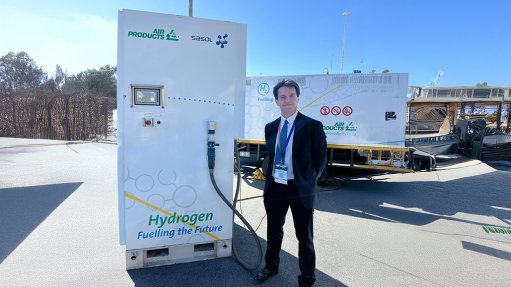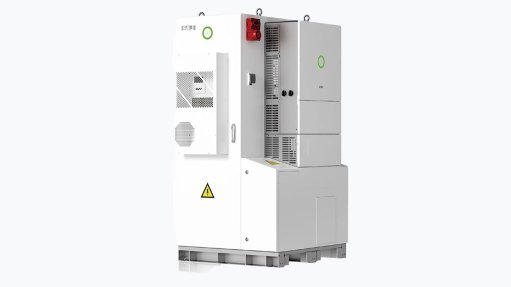Renewable energy early adopters – we’ve got some good news
This article has been supplied.
By Mark Freeman. Offer Manager Digital Buildings, Anglophone Africa and Nishandra Baijnath, Systems Architect, Power Systems, Anglophone Africa at Schneider Electric
As the country struggles to find some form of power provision normalcy, it is encouraging to see how many businesses and homes are moving to renewable and alternative energy resources to substitute and stabilise energy demand and usage.
By and large, most of the renewable energy installations, particularly solar, are ticking all the boxes when it comes to realistically delivering on the promised returns whilst transitioning to a greener source of energy. The market is becoming more educated, and the playing field, competitive, as more providers emerge to meet the demands of this burgeoning industry.
But what about the early adopters, those businesses and even homes that started implementing renewable energy resources after South Africa first experienced its daily loadshedding (for two weeks) in January 2008?
The subsequent fallout of 2008 also saw dramatic hikes in power cost, which again encouraged businesses to use solar and other renewable resources whilst relying on fossil fuel power generators as alternative sources of energy to ensure continuity of business operations.
Fast forward to 2023 and these renewable sources such as solar arrays are no longer just a valuable cost saver but also an integral part of keeping businesses running. This coupled with a genset (diesel generator) of some sort ensures that the business can power through the rolling blackouts that have become the de facto standard, however, this is also where we hit a snag.
Many of these systems are not equipped to seamlessly switchover from the grid to solar supply without some form of interruption or optimise the use of the genset to reduce the consumption of fuel.
A real-life example: your local shopping centre goes pitch dark for a few minutes every time loadshedding starts or the grid returns as a result of the operation to the automatic changeover unit to swing the load from the grid to the genet and then back again when the grid supply returns.
A genset is necessary to provide the critical voltage reference for the solar system but this PV system does not communicate with the genset to reduce its output when the solar PV system has the capability to manage most of the load. Not only is this frustrating and even a bit unnerving but the interruption in power supply inflicts havoc on PoS systems, HVACs, and other technologies.
New pieces of a puzzle
The reality is, older solar or other renewable systems do not offer smart and intelligent system integration. The limited functionality in these types of systems does not provide the flexibility required to manage multiple energy sources whilst at the same time handling interconnected loads in the most efficient manner.
For a system to be smart, it must be able to communicate with the devices part of the system whilst possessing the intelligence to manage the energy and power with interconnected loads operating in parallel with the grid or disconnected from the grid in an islanded manner, all in real time.
If not, it can result in damaged equipment, interruption in operations and safety issues whilst both mitigating energy generation through the solar system and reducing the consumption of fuel of the genset.
For solar energy to start running immediately, it needs a reference point, and this is where battery backup comes into play. Older grid inverters must also be replaced with hybrid inverters to allow for seamless switchover between various energy sources such as solar, batteries and grid.
Put in layman’s, a hybrid inverter uses DC power (from the solar panels or backup battery/ies) and converts it to AC power that is usable in your home or any other building that requires electrical energy. Alternatively, it can use AC power from the grid to convert to DC power that is used to charge the batteries that store this energy in the form of DC power.
The second last piece of the puzzle is then battery energy storage. Due to the variability of solar power generation (due to unpredictable weather conditions, for example), it’s not always possible to use it as it’s generated. Batteries allow a means to store this generated energy for use at a later stage or facilitates the few seconds switchover from AC from solar to grid and the other way around.
Then, the last and very important piece of the puzzle is power and energy management software. At Schneider Electric our EcoStruxure Microgrid Operation power management system is located on site and provides the critical edge control necessary for the resilience and stability of the microgrid.
It is a real time system with deterministic algorithms to manage IEDs (intelligent electronic devices) and generators using the local SCADA/HMI and managing the state of operation for islanding and reconnection thereby providing the stability and fuel reduction.
Furthermore, our EcoStruxure Microgrid Advisor a cloud-based Energy Management System (EMS) that manages the optimal use of energy resources. It features artificial intelligence (AI) for load / generation forecasting using machine learning (ML) and holistic optimisation.
This EMS uses a hybrid approach with cloud and edge functionality for automatic optimisation of DER (distributed energy resources) operation by controlling when to consume, produce or store energy according to the applicable electricity tariff rate whilst providing a web-based HMI for facility and energy managers. This further extends the functionality of the microgrid system for participation in demand response mechanisms like virtual power plant.
Schneider Electric’s EcoStruxure Microgrid Operation maximises renewable energy use by offering:
- Simple, robust, and scalable, with pre-configurated solutions for small, medium, or large sites.
- Provides resilience with advanced power management functionalities on load management, load shedding, black start, and load restoration.
- Compatible with existing microgrid DER control solution.
- Offers grid-connected energy optimisation by adding EcoStruxure Microgrid Advisor which allows buildings to dynamically control on-site energy resources and loads to optimize your facility’s performance.
- Configurable for small and medium sites with EcoStruxure Microgrid Build.
- Advanced cybersecurity features.
Once all the pieces of the puzzle are in place i.e., hybrid inverter, battery storage and energy management, businesses will be able to truly reap the benefits of their initial investment in renewable energy whilst enjoying a fuel cost reduction without reinventing the wheel.
Comments
Press Office
Announcements
What's On
Subscribe to improve your user experience...
Option 1 (equivalent of R125 a month):
Receive a weekly copy of Creamer Media's Engineering News & Mining Weekly magazine
(print copy for those in South Africa and e-magazine for those outside of South Africa)
Receive daily email newsletters
Access to full search results
Access archive of magazine back copies
Access to Projects in Progress
Access to ONE Research Report of your choice in PDF format
Option 2 (equivalent of R375 a month):
All benefits from Option 1
PLUS
Access to Creamer Media's Research Channel Africa for ALL Research Reports, in PDF format, on various industrial and mining sectors
including Electricity; Water; Energy Transition; Hydrogen; Roads, Rail and Ports; Coal; Gold; Platinum; Battery Metals; etc.
Already a subscriber?
Forgotten your password?
Receive weekly copy of Creamer Media's Engineering News & Mining Weekly magazine (print copy for those in South Africa and e-magazine for those outside of South Africa)
➕
Recieve daily email newsletters
➕
Access to full search results
➕
Access archive of magazine back copies
➕
Access to Projects in Progress
➕
Access to ONE Research Report of your choice in PDF format
RESEARCH CHANNEL AFRICA
R4500 (equivalent of R375 a month)
SUBSCRIBEAll benefits from Option 1
➕
Access to Creamer Media's Research Channel Africa for ALL Research Reports on various industrial and mining sectors, in PDF format, including on:
Electricity
➕
Water
➕
Energy Transition
➕
Hydrogen
➕
Roads, Rail and Ports
➕
Coal
➕
Gold
➕
Platinum
➕
Battery Metals
➕
etc.
Receive all benefits from Option 1 or Option 2 delivered to numerous people at your company
➕
Multiple User names and Passwords for simultaneous log-ins
➕
Intranet integration access to all in your organisation






















